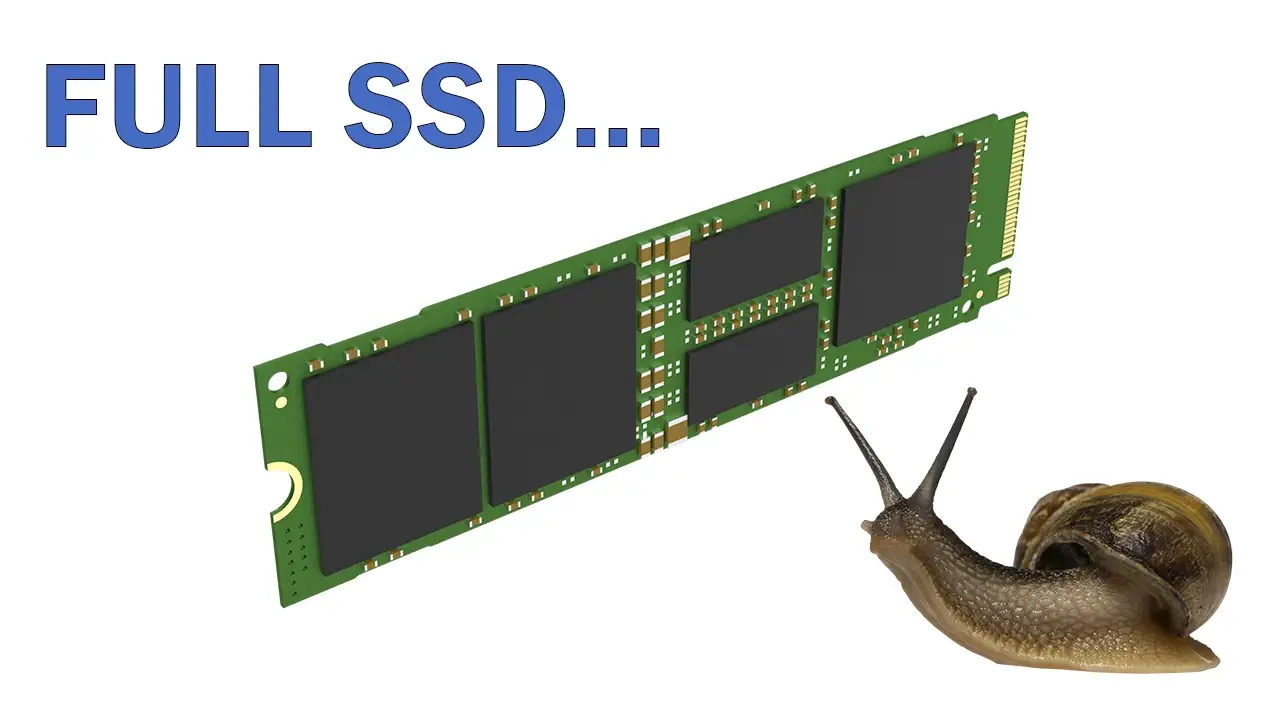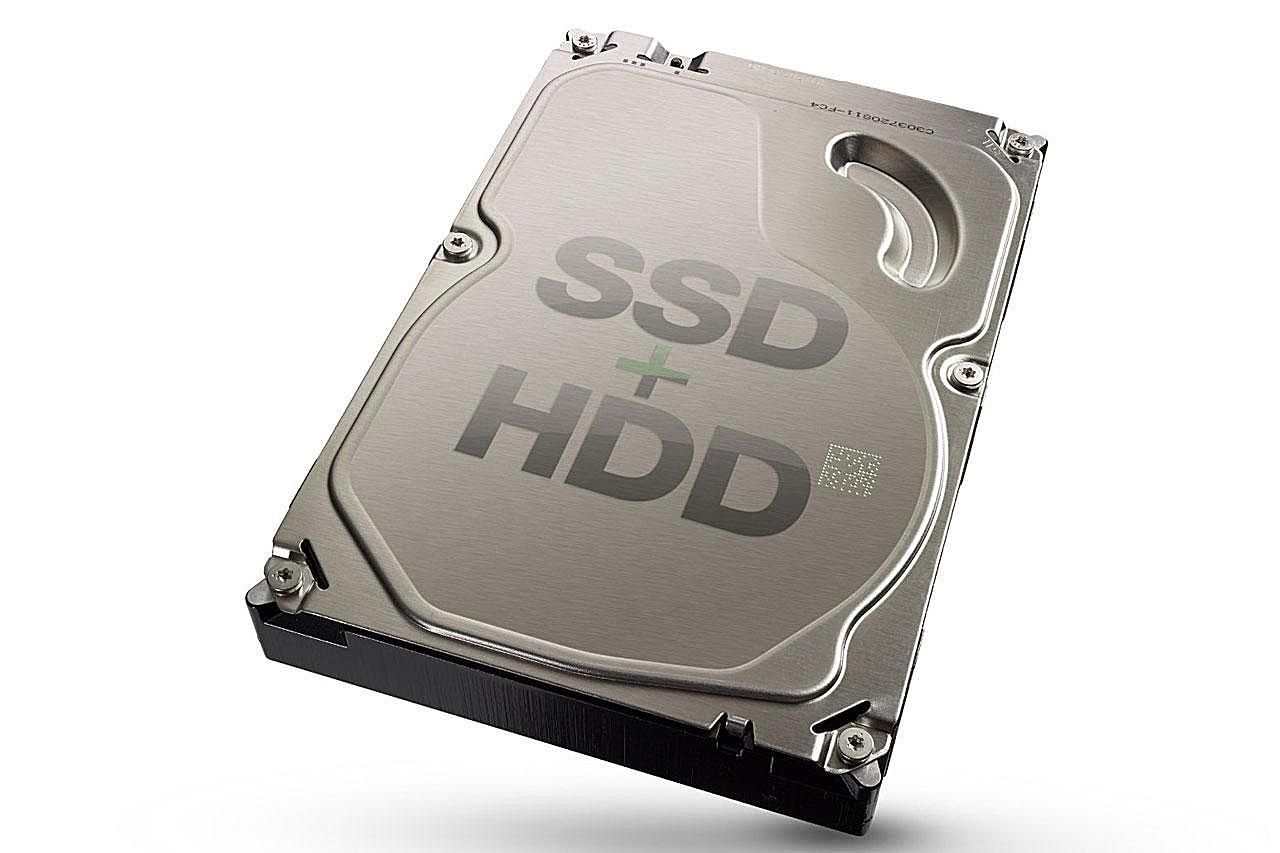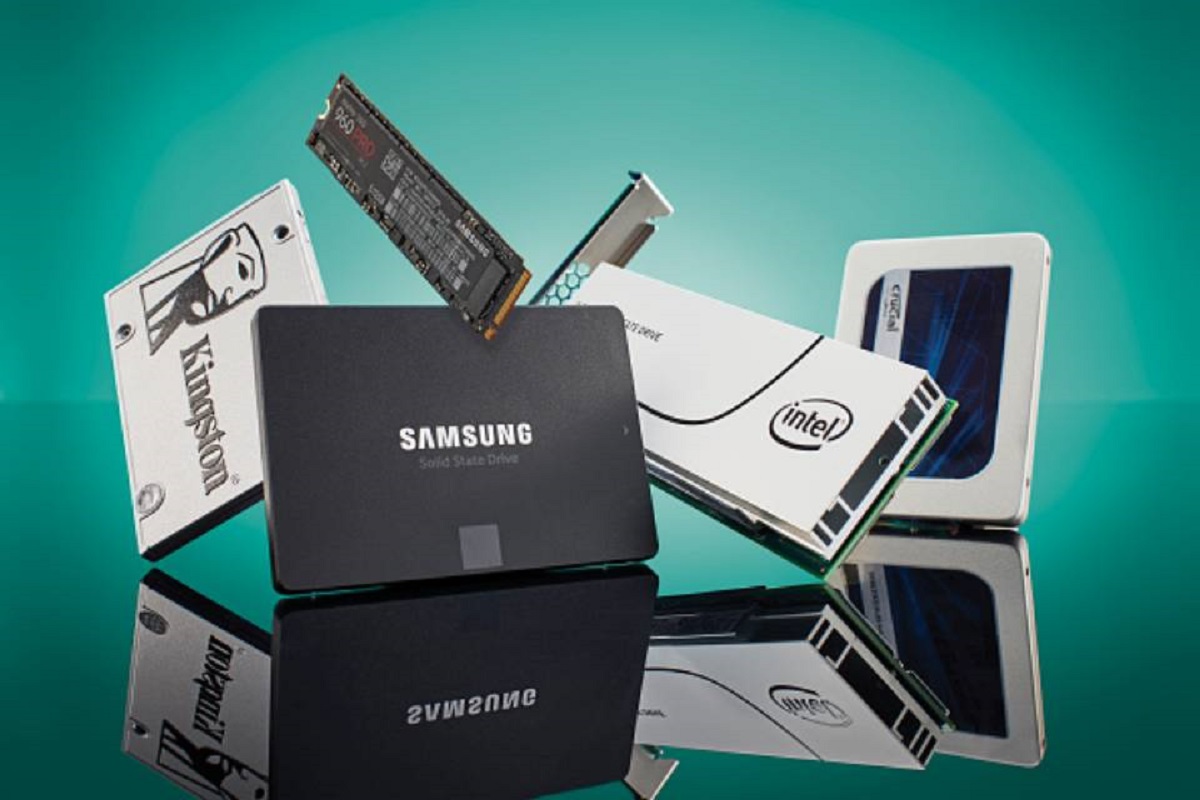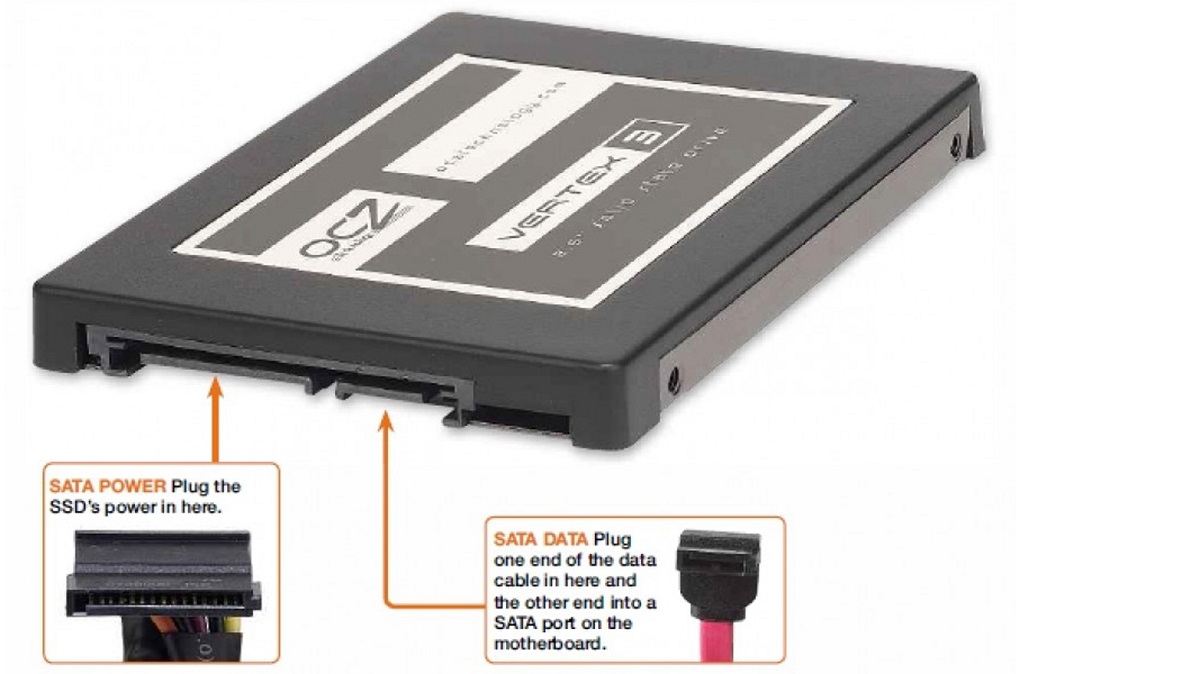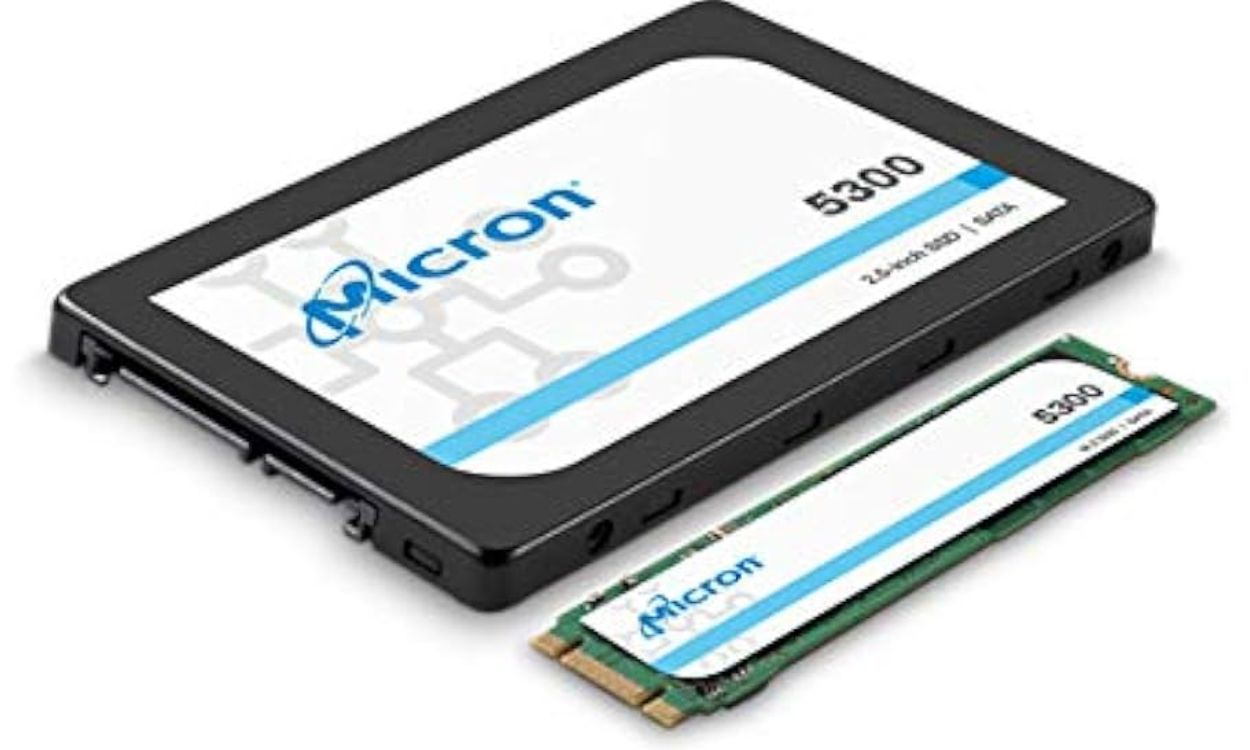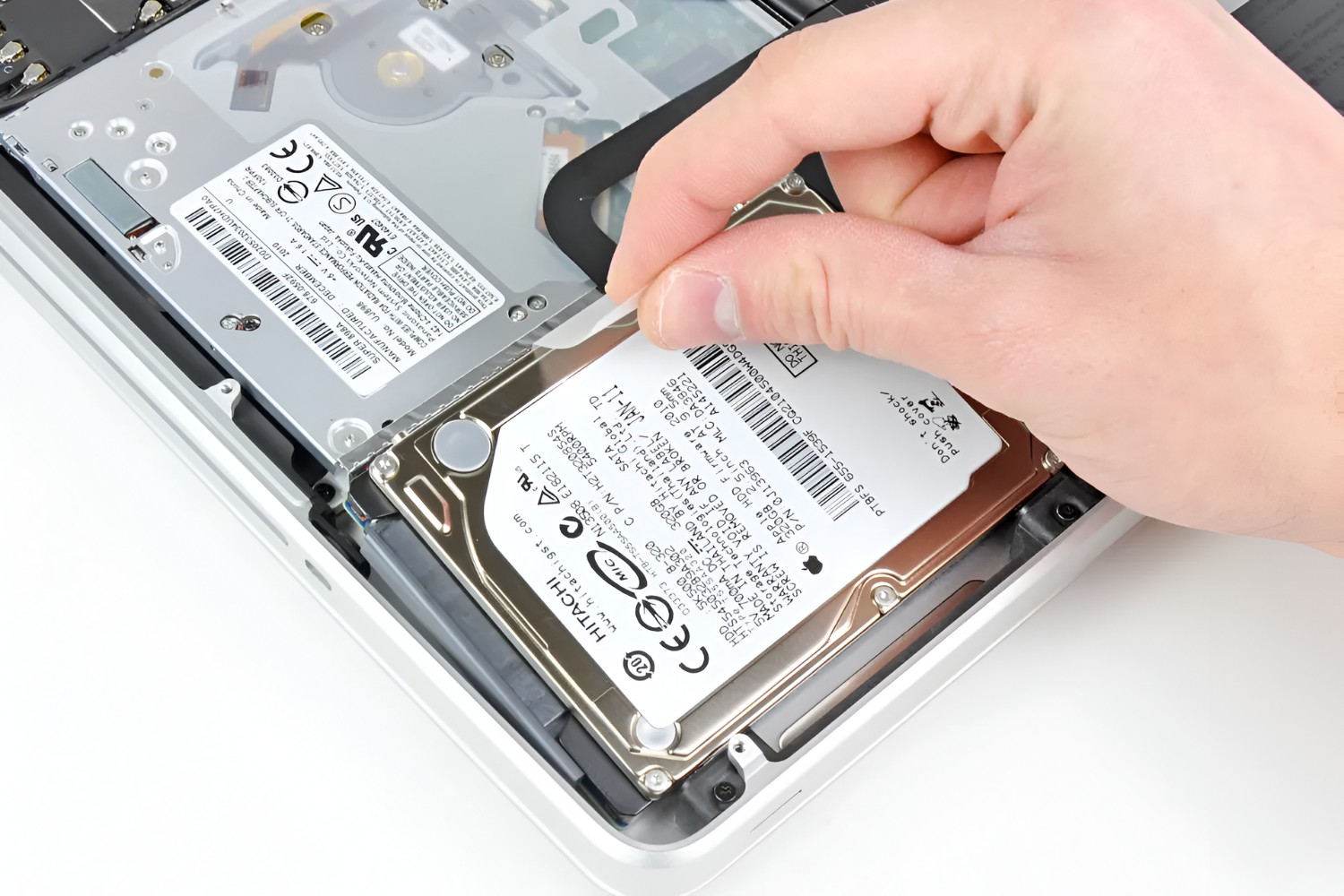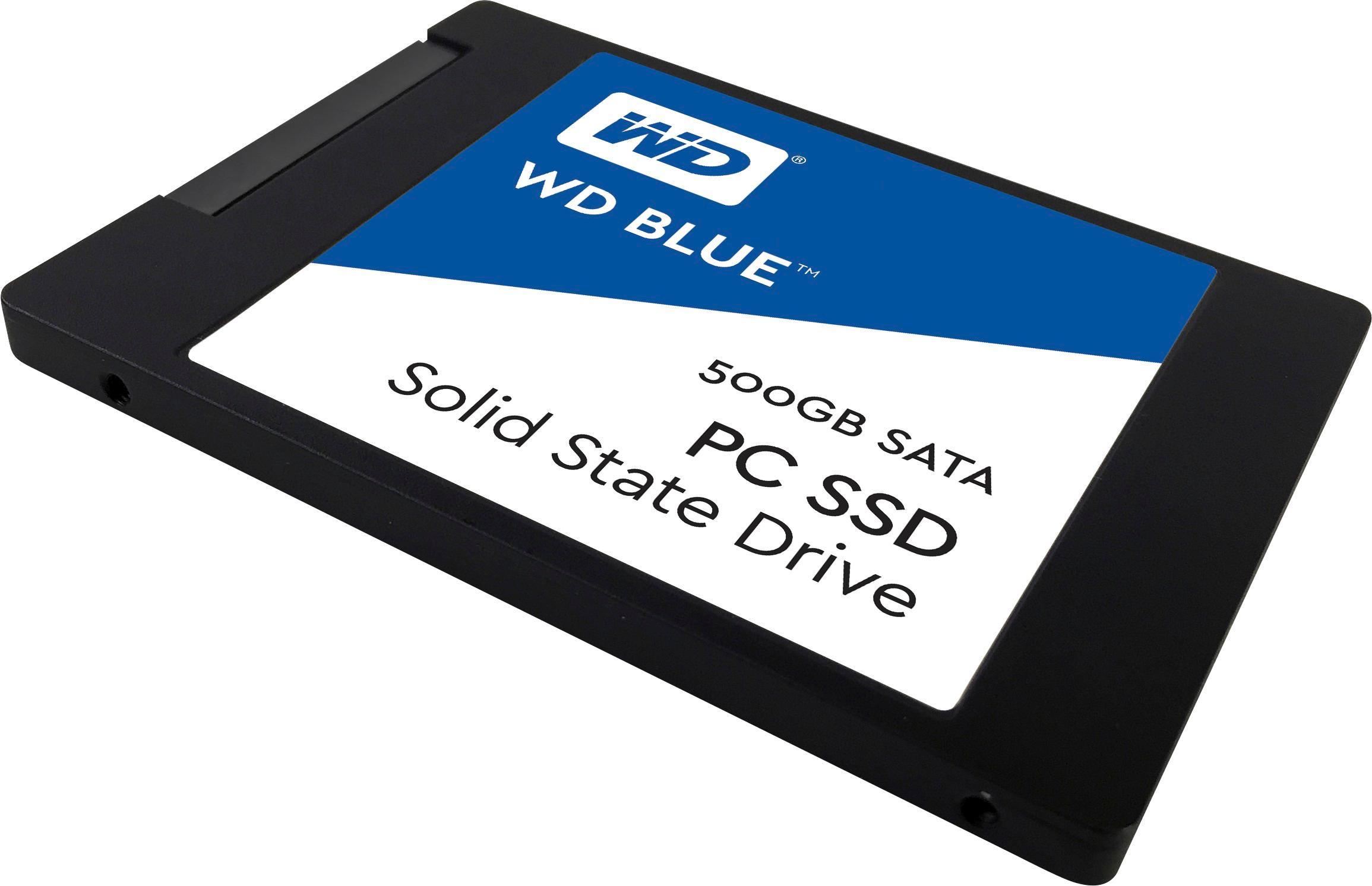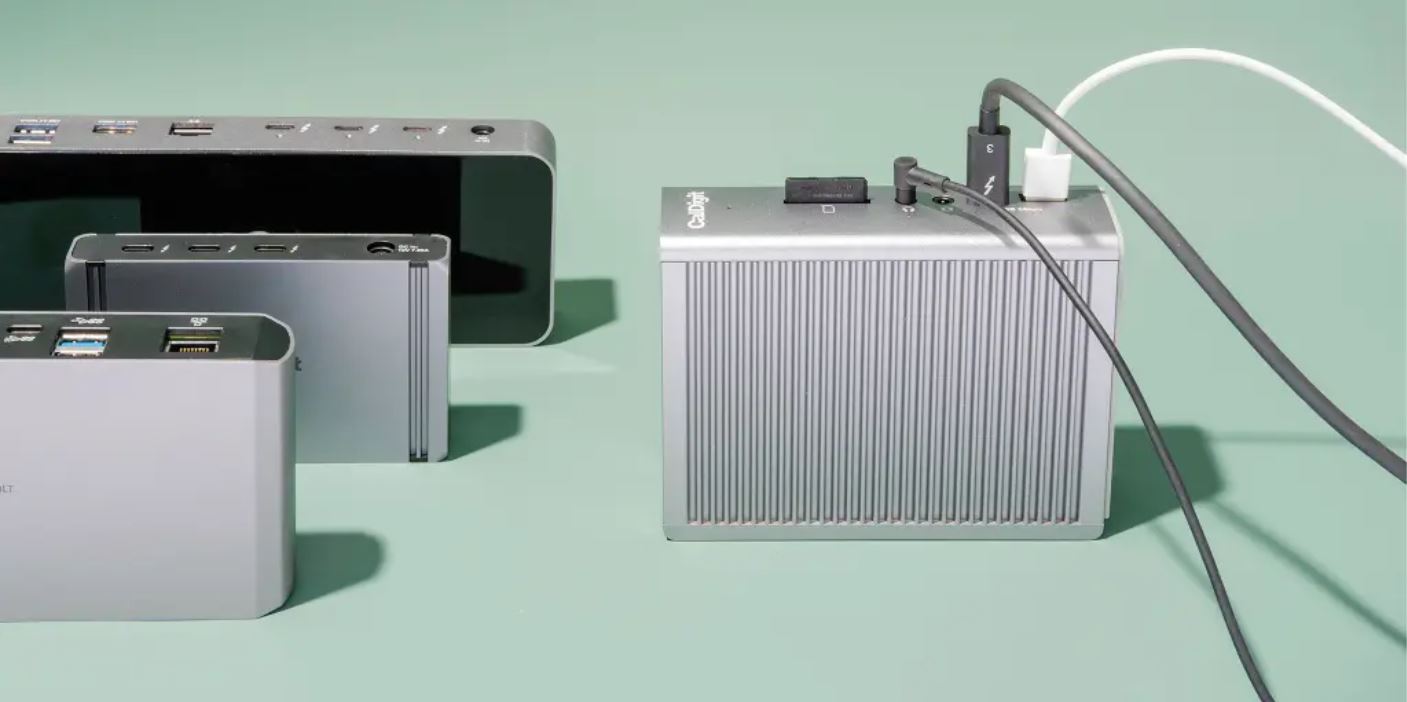Introduction
An SSD, short for solid-state drive, is a type of storage device that has gained popularity in recent years for its speed, reliability, and durability. Unlike traditional hard disk drives (HDDs) that use spinning platters and magnetic read/write heads, SSDs use flash memory chips to store and retrieve data.
With their faster data access times and lower power consumption, SSDs have become the go-to storage solution for many individuals and organizations looking to boost system performance. However, there has been a common misconception among users that SSDs become slower when they are filled up with data.
In this article, we will debunk this myth and explore the factors that can affect the performance of SSDs. We will also discuss the techniques used to maintain consistent speed and reliability, such as overprovisioning, wear-leveling, and TRIM.
By the end of this article, you will have a clear understanding of how SSDs work, why performance degradation can occur, and what measures you can take to ensure your SSD maintains optimal performance throughout its lifespan.
What is an SSD?
An SSD, or solid-state drive, is a type of storage device that has become widely adopted due to its numerous advantages over traditional hard disk drives (HDDs). Unlike HDDs, which use spinning platters and read/write heads to access data, SSDs utilize flash memory chips to store and retrieve information.
Flash memory is a non-volatile storage technology that retains data even when the power is turned off. This makes SSDs more reliable and durable compared to HDDs, which are susceptible to mechanical failures. Additionally, because SSDs have no moving parts, they operate silently and consume less power.
One of the key advantages of SSDs is their incredible speed. They can read and write data at much faster rates than HDDs, resulting in significantly reduced boot times and improved overall system performance. This increased speed is especially noticeable when it comes to accessing large files, launching applications, and performing data-intensive tasks.
SSDs are available in various form factors, including 2.5-inch drives for laptops and desktops, M.2 drives for ultra-thin notebooks and tablets, and PCIe-based drives for high-performance applications. They come in different capacities ranging from a few hundred gigabytes to multiple terabytes, offering ample storage space for all types of users.
In summary, an SSD is a storage device that utilizes flash memory chips to provide fast, reliable, and efficient data storage. Its lack of moving parts, impressive speed, and durability make it a popular choice among individuals and businesses seeking to enhance their computer’s performance and reliability.
How do SSDs work?
Understanding how SSDs work requires a basic knowledge of flash memory and controller technology. SSDs consist of three main components: the controller, the memory chips, and the cache.
The controller acts as the brain of the SSD, managing its operations and facilitating communication between the memory chips and the computer. It handles tasks such as data reading and writing, error correction, wear-leveling, and garbage collection.
The memory chips are where the data is stored. They are made up of NAND flash memory cells, which can either be single-level cell (SLC), multi-level cell (MLC), or triple-level cell (TLC) based on the number of bits they can store per cell. SLC offers the highest performance and endurance, while TLC offers higher capacity at a more affordable price.
The cache is a small portion of the memory that stores frequently accessed data. It acts as a temporary buffer between the computer and the storage cells, helping to improve read and write speeds.
When data needs to be written to an SSD, the controller breaks it down into smaller chunks and stores them in the available memory cells. When data is requested, the controller retrieves it from the appropriate memory cells and sends it back to the computer.
SSDs use a technique called wear-leveling to distribute data evenly across the memory cells. This helps prevent excessive wear on any particular cell, prolonging the lifespan of the drive. The controller also performs garbage collection, which involves reclaiming unused or deleted data blocks to ensure optimal performance and efficiency.
Overall, SSDs work by utilizing flash memory technology, a smart controller, and efficient data management techniques to provide fast and reliable storage. The combination of these components results in high-speed data access, improved system performance, and enhanced durability compared to traditional hard disk drives.
Understanding Performance Degradation
While SSDs offer impressive speed and performance, it’s important to note that their performance can degrade over time. This degradation is primarily caused by two factors: data fragmentation and the limited lifespan of NAND flash memory cells.
Data fragmentation occurs when files and their associated data are spread out across different memory cells. As a result, the SSD takes longer to retrieve the data, leading to slower performance. Fragmentation can happen over time as data is constantly read and written to the drive.
The limited lifespan of NAND flash memory cells is another factor that can affect the performance of SSDs. Each memory cell has a finite number of write cycles before it becomes less reliable. As cells are written to and erased repeatedly, they can degrade and lead to slower performance or, in extreme cases, complete failure.
Furthermore, as an SSD fills up with data, the ability to write new data can be impacted. When the drive is almost full, the controller has a limited number of available memory cells to write new data. This can result in slower write speeds and decreased overall performance.
It’s worth noting that newer SSD models and advancements in technology have mitigated some of these performance degradation issues. Manufacturers have developed techniques such as wear-leveling, overprovisioning, and improved error correcting codes to minimize the impact of data fragmentation and extend the lifespan of NAND flash memory cells.
To ensure optimal performance and longevity, it’s recommended to keep SSDs from reaching near capacity. Leaving some free space allows the controller to have enough available memory cells for efficient data storage and retrieval. Additionally, regularly performing disk maintenance, such as defragmentation, can help consolidate data and improve performance.
In the next sections, we will explore techniques that SSDs employ, such as overprovisioning, wear-leveling, and TRIM, to maintain consistent performance and address the potential issues associated with performance degradation.
The Myth of Slower SSDs when Full
There has been a common misconception among users that SSDs become slower when they are filled up with data. However, this is a myth that needs to be debunked.
Unlike traditional hard disk drives (HDDs), which can experience performance degradation as they fill up with data, SSDs do not face the same issue. The myth stems from the fact that SSD performance can be affected when the drive is nearly full. However, this is not due to the drive being full, but rather because of how SSDs handle data storage and the limited number of available memory cells as the drive fills up.
When an SSD is near capacity, the controller has a smaller pool of available memory cells to write new data. This can lead to slightly slower write speeds as the controller has to locate and allocate the few remaining empty cells. However, this does not mean that the entire drive is slower. The read speeds of an SSD are not affected by the amount of data stored on the drive.
Furthermore, this slowdown in write speeds is not a significant performance bottleneck for most users. It is only noticeable when transferring large files or performing data-intensive tasks that heavily rely on write speeds. For day-to-day tasks and regular usage, the impact is minimal, and users are unlikely to experience any noticeable decrease in performance.
It’s important to note that modern SSDs are equipped with advanced technologies and techniques to mitigate the impact of limited available memory cells. Features like overprovisioning, wear-leveling, and improved error correcting codes help maintain consistent performance and extend the lifespan of the drive.
In summary, the myth that SSDs become slower when they are full is unfounded. While the write speeds of an SSD may be slightly affected when the drive is near capacity, the overall performance degradation is minimal and unlikely to be noticeable in everyday usage.
Overprovisioning: The Secret to Consistent Performance
Overprovisioning is a technique used in SSDs to improve performance and extend the lifespan of the drive. It involves setting aside a certain percentage of the drive’s total capacity as unused space that is not accessible for normal data storage.
By allocating this extra space, the SSD controller has more available memory cells to work with, allowing it to optimize performance and maintain consistency throughout the drive’s lifespan. This is particularly important as SSDs age and encounter increased wear on the memory cells.
One of the benefits of overprovisioning is the reduction of write amplification. Write amplification occurs when data is written to flash memory cells, resulting in additional wear and tear on these cells. With overprovisioning, there is more available space for the controller to distribute writes evenly, reducing write amplification and extending the life of the SSD.
In addition, overprovisioning helps with garbage collection and wear-leveling. With more available memory cells, the controller has room to efficiently perform these tasks, leading to better overall performance and longevity of the drive.
It’s worth noting that overprovisioning can be done at the factory level, where SSDs are manufactured with a predetermined amount of unused space, or at the user level, where users manually set aside a portion of the drive’s capacity for overprovisioning.
The amount of overprovisioning needed varies depending on the specific SSD and its intended usage. As a general rule of thumb, it is recommended to allocate around 10-20% of the SSD’s total capacity for overprovisioning. However, this percentage may differ based on factors such as the SSD’s controller, the workload it will handle, and the desired level of performance and endurance.
Overall, overprovisioning plays a crucial role in maintaining consistent performance and prolonging the life of an SSD. With the additional space, the SSD controller can better manage and optimize data storage, reducing write amplification, improving garbage collection and wear-leveling, and ensuring a more stable and efficient operation of the drive.
Wear-Leveling: Extending the Lifespan of SSDs
One of the challenges with NAND flash memory used in SSDs is that it has a limited number of write cycles per memory cell. Each time data is written or erased, the memory cell degrades slightly. To address this issue, SSDs employ a technique called wear-leveling.
Wear-leveling is a process that evenly distributes write operations across all available memory cells in an SSD. By spreading out the workload, wear-leveling helps prevent certain cells from wearing out faster than others, thus extending the lifespan of the drive.
There are different wear-leveling algorithms employed by SSD controllers, but the goal is the same: to ensure that all memory cells are utilized equally over time. This involves mapping logical addresses to physical locations within the SSD and dynamically rearranging data to distribute writes evenly.
Additionally, wear-leveling algorithms consider the different types of NAND flash memory cells that may vary in their endurance and reliability. By intelligently managing the distribution of data across these different types of cells, wear-leveling further extends the lifespan of the SSD.
Wear-leveling also helps mitigate the impact of write amplification, which occurs when the SSD writes more data internally than is actually requested by the host system. This can result in increased wear on the memory cells. By distributing write operations and minimizing write amplification, wear-leveling reduces the stress on individual cells, contributing to the longevity of the drive.
It’s important to note that wear-leveling is an ongoing process that operates in the background, transparent to the user. As data is written and erased, the controller monitors the wear on each memory cell and adjusts the distribution of writes accordingly.
By implementing wear-leveling techniques, SSDs are able to maximize the lifespan of the NAND flash memory, improve the overall endurance of the drive, and ensure a more balanced utilization of the available storage space. This, in turn, results in a more reliable and long-lasting storage solution for users.
TRIM: Optimizing SSD Performance
TRIM is a command that plays a crucial role in optimizing the performance of SSDs. It allows the operating system to inform the SSD which blocks of data are no longer in use and can be erased, freeing up space for new data to be written.
Without TRIM, SSD performance can degrade over time, as the drive may need to perform time-consuming operations when writing new data. By using TRIM, the SSD can proactively manage its flash memory cells, reducing write amplification and ensuring more efficient data storage.
When a file is deleted from an SSD, the operating system marks the corresponding blocks of data as available, but the SSD is unaware of this change until it is informed by the TRIM command. When the TRIM command is issued, the SSD can immediately erase these marked blocks and prepare them for future write operations, eliminating the need for read-modify-write operations and reducing write amplification.
TRIM is particularly beneficial for maintaining the performance of SSDs over time. As the drive becomes filled with data, TRIM helps prevent performance degradation by allowing the SSD to quickly identify and erase blocks that are no longer in use. This proactive management of data storage ensures that the drive can maintain consistent performance levels and reduce the impact of write amplification.
It’s important to note that TRIM relies on both the operating system and the SSD supporting the feature. The operating system needs to support and issue TRIM commands, while the SSD’s firmware must be TRIM-compatible to effectively carry out the necessary actions.
Most modern operating systems, including Windows, macOS, and Linux, support TRIM. However, it is essential to ensure that TRIM is enabled on your system. You can typically check the TRIM status through the operating system’s disk management tools or by using third-party utilities.
Enabling TRIM on your SSD can significantly enhance its performance and help maintain its speed and reliability over time. By allowing the SSD to efficiently manage its storage space and reduce write amplification, TRIM optimizes data storage and ensures that new write operations can be performed more seamlessly.
How to Avoid Performance Slowdowns
To ensure optimal performance and longevity of your SSD, there are several best practices you can follow:
- Leave Free Space: It is important to keep some free space on your SSD. As the drive fills up, the available memory cells for write operations become limited, leading to potential performance slowdowns. Aim to keep at least 10-20% of the SSD’s capacity free to allow the controller ample room for efficient data storage and retrieval.
- Avoid Over-fragmentation: Fragmentation can impact SSD performance, although to a lesser extent than traditional hard drives. Regularly defragmenting your SSD or using TRIM-compatible tools can help optimize data placement and improve overall performance.
- Enable TRIM: Ensure that TRIM is enabled on your SSD and supported by both the operating system and the SSD’s firmware. TRIM allows the drive to handle data efficiently and maintain performance over time by proactively managing the storage space.
- Keep Firmware Updated: Regularly check for firmware updates provided by the manufacturer of your SSD. Updated firmware often includes performance enhancements, bug fixes, and improved compatibility with the latest operating systems.
- Avoid Excessive Writes: While SSDs are designed to handle a large number of write operations, minimizing unnecessary writes can help prolong the lifespan of the drive. Avoid constant and excessive writes to the SSD, such as excessive downloading or constant swapping of files.
- Use Power Protection: Power outages or sudden system shut downs can increase the risk of data corruption on an SSD. To protect your drive, use an uninterruptible power supply (UPS) or a reliable power source to prevent sudden power interruptions.
- Monitor Drive Health: Regularly monitor the health of your SSD using tools provided by the manufacturer. Being aware of the overall health, temperature, and any signs of potential issues can help you take necessary precautions and address problems in a timely manner.
By following these guidelines, you can optimize the performance and maximize the lifespan of your SSD. While SSDs are robust and reliable, taking proactive measures to maintain their efficiency will ensure that you continue to enjoy the speed and benefits they offer for years to come.
Conclusion
SSDs have revolutionized the world of storage, offering fast data access, improved system performance, and reliability. Throughout this article, we have debunked the myth that SSDs become slower when filled up with data. While write speeds may be slightly affected when an SSD is near capacity, the overall performance degradation is minimal and unlikely to be noticeable in everyday usage.
We have explored how SSDs work, understanding the components such as the controller, memory chips, and cache. We have also delved into the factors that can impact SSD performance, such as data fragmentation and the limited lifespan of NAND flash memory cells.
To overcome these challenges, we discussed crucial techniques used in SSDs, including overprovisioning, wear-leveling, and TRIM. Overprovisioning ensures consistent performance by allocating extra, unused space for the controller to work with. Wear-leveling evenly distributes write operations across memory cells, extending the SSD’s lifespan. TRIM allows the operating system and SSD to communicate, optimizing data storage and reducing write amplification.
To avoid performance slowdowns and ensure the longevity of your SSD, we provided several best practices, such as leaving free space, enabling TRIM, keeping firmware updated, avoiding excessive writes, and using power protection.
SSDs continue to evolve, and modern advancements in technology have significantly improved their performance and endurance. As SSDs become more affordable and widely adopted, it is important for users to understand their capabilities and implement proper maintenance techniques.
By following the guidelines outlined in this article, users can make the most of their SSD investment, experiencing fast and reliable storage for their computing needs. SSDs have revolutionized the storage industry, and their benefits will continue to shape the future of computing.







